The hidden face of ancient art in the archipelago
As a prologue
The Hindu-Buddhist arts are the most recognizable art in the Southeast Asian archipelago, or what was formerly called the Indian archipelago. Meanwhile, Islamic art that emerged in the period of Islamic culture reached its peak in Southeast Asia, is a very less recognizable art even though it has high artistic and historical values.
Acheh, which emerged as a powerful and influential country after the decline of the Hindu-Buddhist kingdoms on the Malay peninsula, and the Southeast Asian archipelago, is one of the historical heritages that totally presents Islamic art.
The doctrine that gave birth to a special art
Islam that teaches Al-Wasatiyyah (ie, the awareness that every Muslim individual is part of justly balanced ummah) has given a Muslim community the space to embrace the goodness that existed in the cultures of pre-Islamic societies, to be placed in harmony with beliefs and practices taught by Islam. And that includes goodness in the vast art field.
Hence, Islamic culture has diversity, which is difficult to quantify ; a number of nations, peoples and tribes that embrace Islam in the World. At the same time, it has also spawned a number of special art, which carry the characteristics of Islamic art in it.
Among that special art is Aceh's gravestone art, which for the time being, is not exaggerated to say, as the hidden face of ancient art, or even the hidden treasures of ancient art. Very few people know it, and not many people are trying to explore it.
Exploration of Mapesa NGOs for Aceh's Gravestone Art
As it has just been said that Aceh's gravestone art, in general, has received less attention, and is "the hidden face of ancient art", therefore Mapesa has been compelled to focus on this archeological heritage, to trace, document, study and trying to preserve it.
The interest of Aceh gravestones as one of the cultural products in the past is mainly to find out the form and cultural values that developed for hundreds of years ago. It is also a kind of artwork that provides various information and data through its inscriptions and decorations. The gravestones usually also contain epitaphs telling the owner of the grave, as well as various sentences, whether it be the verses of the Qur'an, hadith or religious poems. In addition, burial complexes where ancient gravestones exist can also help various studies on ancient spatial layout.
So, even though it is hard work and takes a long time, it is something worth doing in the development of several branches of knowledge, especially history and archeology.
In a historical and archaeological site near Banda Aceh
Short reports, along with pictures, like this, will also be encountered in subsequent posts, because that is the main work of this non-governmental organization based in Aceh.
Archaeological site in the form of this ancient cemetery was in a village called Lam Blang Trieng, District Lampeuneurut, Regency of Aceh Besar. First discovered by Mapesa in a state covered by thick bushes. This cemetery belongs to the people who lived in the area about 500 years ago.
The nobles and important figures of the time are believed to have been buried here with the markings of high artistic gravestones. Unfortunately, so far, no names of them have been found because some of the inscriptions have been blurred and hard to read.
Among the things that really interest is the form of some gravestones and also the motifs of decoration that is very charming and rich. In general there are two main forms of gravestones in this cemetery, one, a flat gravestone that sometimes has both wings on the right and left sides, and the other, a gravestone originating from earlier traditions; rectangular, perpendicular, and it all culminates with something resembling a crown. As for the decoration, it is not exaggerated to describe, that the ornaments on the gravestones appear as an explosion of the reliefs of dense and highly dynamic floral motifs.
Here are the pictures.
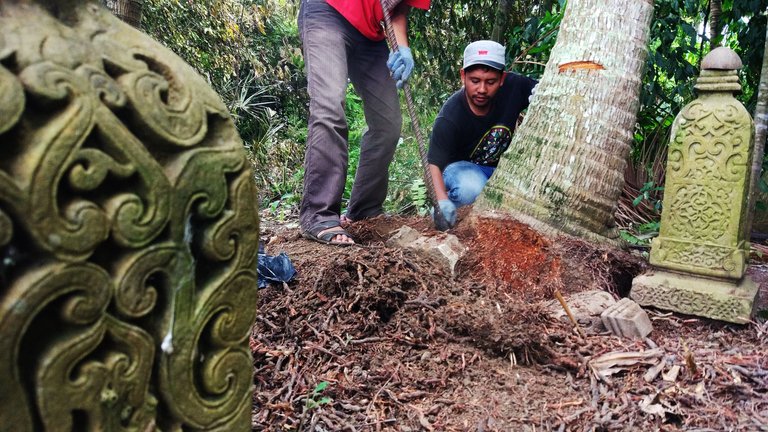
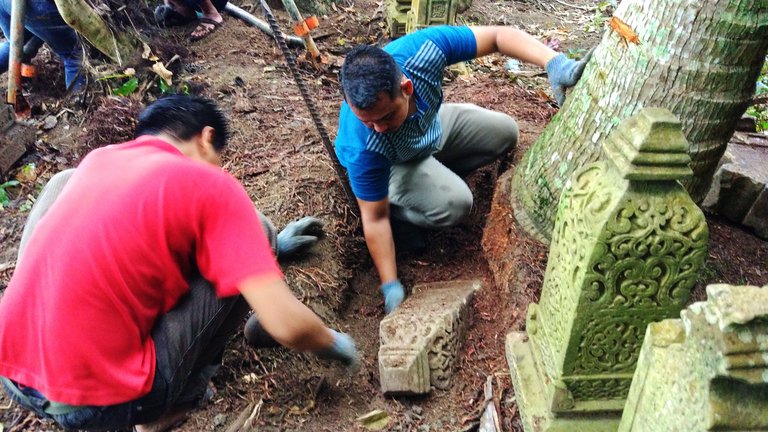
Onegravestone that has been sank into the ground, and above it grows a coconut tree. The Mapesa team is trying to pick it up again.
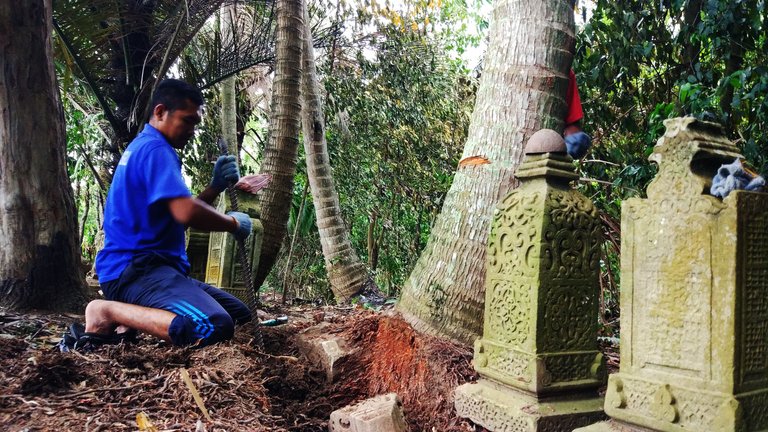
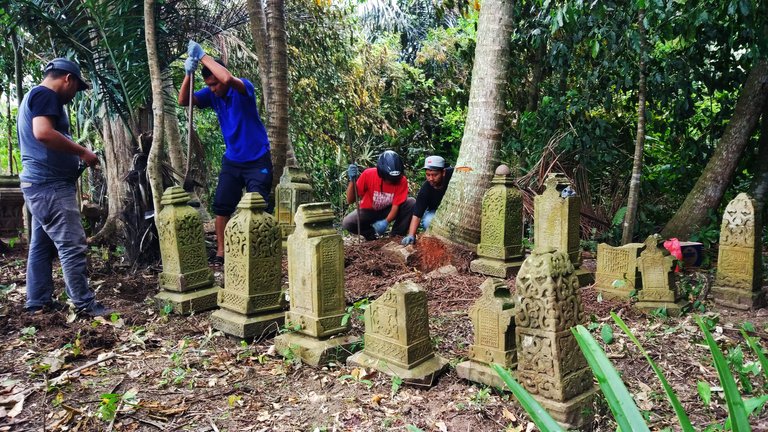
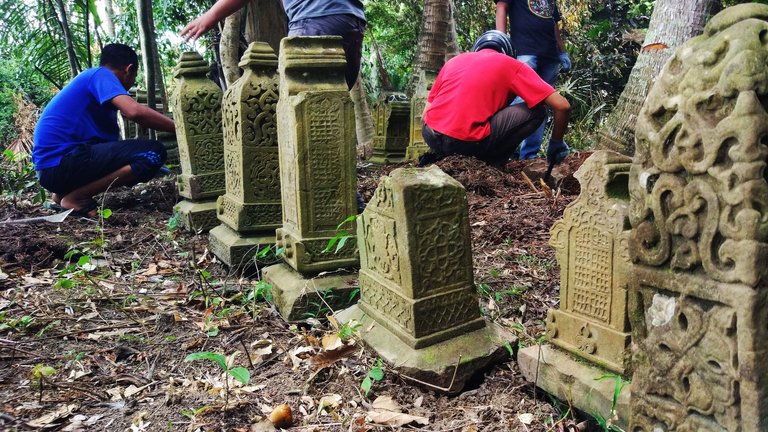
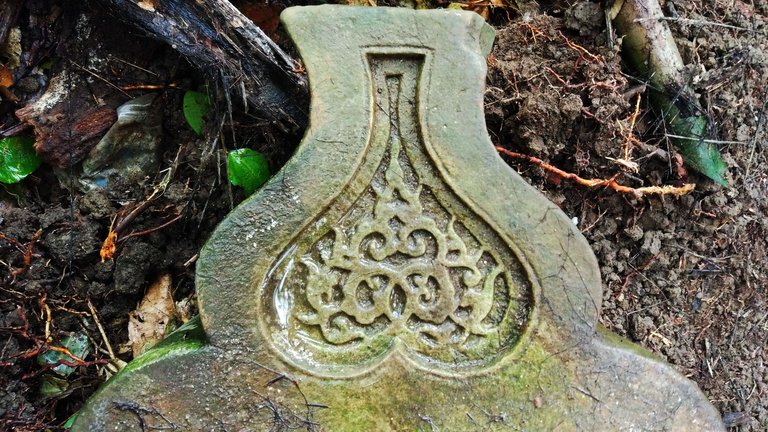
Mapesa's plan concerns this site
In the view of Mapesa, this site and various archaeological heritages on this site have a high importance for the heritage of human history and for the development of knowledge about the past in the future. Therefore, this site deserves adequate care and preservation. On this basis, Mapesa plans to preserve this cemetery by building a cupola that shelter it and keeping it from the heat of the sun and rain, which will destroy it slowly. Donate for this plan is open to anyone.

new information gain because of you :)
thanks @mapesa
You welcome, and thanks for the comment.
Dig up the past for the better future! Nice work team!
Semoga peninggalan sejarah bisa di jaga dan di lestraikan
Nice bg... Please follback and upvote my steem......
Menggali sejarah, informasi yang menarik sekali..Trims infonya @mapesa.
The NGO from Aceh that I know who research and explain on archeology part as main focus in all writing. I appreciate of their work.
very nice and i love reading your post... i love Aceh
This is indeed historic, I must admit I have not seen graves that look like that before. History is older than mankind. Keep it up pal, we need more of this.